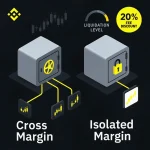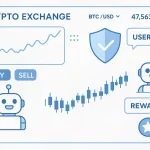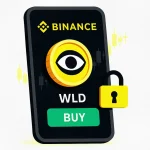If you’ve spent any time in crypto, you’ve heard about forks. They can move markets, split communities, and create entirely new coins. Yet many investors still conflate a “hard fork” with a “soft fork,” or treat both as interchangeable upgrades. They’re not. This guide offers Hard Forks vs Soft Forks Explained in plain language, with the key technical and economic differences that matter for traders, builders, and long-term holders.
Want a practical way to position for forks on a reliable exchange? You can open an account at CoinEx with referral code mhz7w to access listings, liquidity, and fork-related announcements before volatility hits.
Why forks happen in the first place
Blockchains run on rules. Those rules define block size limits, signature formats, opcodes, gas schedules, difficulty adjustments, and how nodes agree on the canonical chain. Over time, communities discover bugs, think of optimizations, or propose new features. The only way to change the rules is to coordinate a fork—a protocol change that updates what the network considers valid.
Forks aren’t inherently dramatic. Many are routine. The drama (and opportunity) appears when not everyone agrees on the change or upgrades at the same time.
Soft fork vs hard fork at a glance
- Soft fork: A backward-compatible change that tightens or restricts the rules. Old nodes that don’t upgrade will still accept the new blocks as valid because the new rules are a strict subset of what old nodes already allowed. Examples: Bitcoin’s SegWit (2017) and Taproot (2021).
- Hard fork: A non-backward-compatible change that expands, alters, or otherwise breaks compatibility with old rules. Nodes that don’t upgrade will reject blocks from upgraded nodes, which can lead to a chain split. Examples: Ethereum’s 2016 DAO hard fork (creating Ethereum and Ethereum Classic), and Bitcoin Cash splitting from Bitcoin in 2017.
The quick mental model: soft forks narrow the set of valid blocks; hard forks redefine the set of valid blocks in a way older software can’t accept.
The technical core
-
Backward compatibility
- Soft fork: Compatible. Old nodes accept new blocks, but they may not fully enforce the new restrictions.
- Hard fork: Incompatible. Old nodes reject new blocks from upgraded peers.
-
Validation and enforcement
- Soft fork: New rules are enforced by upgraded miners and full nodes. Old nodes see blocks as valid but can’t enforce the new constraints (e.g., new script types). Security depends on the majority of work enforcing the stricter rules.
- Hard fork: Everyone must upgrade to stay on the same chain. If part of the economy refuses, the network may split.
-
Activation methods
- Soft fork: Often uses miner signaling (e.g., version bits like BIP9), user-activated soft forks (UASF, e.g., BIP148), or hybrid triggers with timeouts.
- Hard fork: Typically scheduled at a specific block height or timestamp. In Ethereum, hard forks bundle multiple EIPs and require node upgrades by the activation block.
-
Replay protection
- When a hard fork splits a chain, transactions can sometimes be valid on both chains and “replayed.” Good governance implements replay protection to prevent this. Examples: EIP-155 introduced chain IDs on Ethereum; Bitcoin Cash used SIGHASH_FORKID.
Economic implications that move markets
- Chain split risk: Hard forks can create two live assets if consensus fails to align. Each asset competes for hashpower, developer effort, liquidity, and brand mindshare.
- Price discovery: Fork announcements affect implied future supply and narratives. Traders price in expected support from miners, exchanges, and wallets.
- Liquidity and listings: Exchange support is decisive. A forked coin with thin liquidity may suffer high volatility and slippage. Watch exchange notices for deposit/withdrawal halts and listing timelines.
- Custody and key management: If you self-custody during a chain split, you may receive coins on both chains. Claiming them safely requires careful tooling and replay-safe procedures.
Tip: Before major forks, read your exchange’s policy. If you want full optionality on forked assets, consider holding your own keys—or use an exchange that has a transparent fork policy. Check CoinEx sign-up with code mhz7w for access to announcements and potential fork distributions where applicable.
Case studies you should know
-
Bitcoin vs Bitcoin Cash (2017)
- The debate: Scaling via bigger blocks (BCH) vs scaling via soft-forked improvements and second-layer solutions (BTC).
- Outcome: A hard fork split produced BTC and BCH. Exchanges listed both; miners and users chose sides. BTC retained the original “Bitcoin” ticker on most venues.
-
SegWit soft fork (2017)
- Purpose: Fix transaction malleability and increase block capacity via witness data segregation. Activated as a soft fork with miner signaling and later a UASF push.
- Market impact: Enabled Lightning Network progress and better fee dynamics without splitting the chain.
-
Ethereum DAO hard fork (2016)
- The crisis: The DAO exploit drained funds, prompting a community debate: immutability vs social consensus.
- Result: A hard fork restored funds on the main chain (ETH) while dissenters continued the original rules as Ethereum Classic (ETC). EIP-155 followed to strengthen replay protection.
-
Ethereum’s rolling network upgrades
- Multiple named hard forks (Homestead, Byzantium, Constantinople, London) added EIPs over time. The Merge, a consensus transition from PoW to PoS, also required coordinated upgrades.
-
Taproot soft fork (Bitcoin, 2021)
- Upgraded scripting with Schnorr signatures and MAST for better privacy and efficiency, activated with miner signaling and community coordination.
Governance, signaling, and social consensus
Blockchains are social systems with cryptography. Code defines rules, but humans decide which code to run.
- Miners and validators: Provide security and signal readiness.
- Full node operators: Enforce rules; they are the ultimate referees of valid blocks.
- Developers: Propose and implement changes, but lack unilateral authority.
- Exchanges and wallets: Determine asset fungibility for the masses. Their listing and support decisions influence which chain captures liquidity.
Soft forks usually rely on broad miner support or user activation without breaking old clients. Hard forks require stronger coordination and clearer messaging to prevent confusion.
Security considerations
- Hashpower and validator distribution: A chain split divides security resources. The weaker chain is more vulnerable to reorgs or 51% attacks.
- New code risk: Hard forks can introduce more surface area for bugs or consensus failures. Soft forks tend to be conservative, though not risk-free.
- Replay attacks: Without robust replay protection, your transaction on one chain might be valid on the other. Use wallets and exchanges that support replay-safe tooling.
What happens if you don’t upgrade your node
- In a soft fork: You remain on the same chain, but you’re not enforcing the newest rules. You may accept blocks others would reject, which is a subtle risk.
- In a hard fork: Your node will likely diverge or stall when it encounters blocks it deems invalid. Practically, you fall off the main network unless you intentionally support a minority chain.
Investor checklist for upcoming forks
- Identify the fork type: soft or hard; backward-compatible or not.
- Read the activation plan: block height, signaling threshold, timeouts.
- Confirm replay protection: Is there a chain ID or equivalent mechanism?
- Watch exchange notices: Deposits/withdrawals can pause. Listing policies determine whether you’ll receive forked coins.
- Manage custody: If you want both sides of a potential split, self-custody before the snapshot. If you prefer simplicity and liquidity, keep funds on a reputable exchange that publishes fork handling policies.
- Prepare tooling: Update wallets and nodes. Test on testnets if you operate infrastructure.
For trading flexibility around forks, many market participants use exchanges with deep books and clear communications. Create an account at CoinEx using referral code mhz7w to monitor fork timelines and access pairs early when new assets list.
Builder and operator notes
- Versioning: Keep clear release notes for node clients. Communicate activation parameters well in advance.
- Safe defaults: Ship clients that minimize accidental splits; consider lock-in thresholds and fallbacks.
- Monitoring: Observe orphan rates, signaling metrics, and client diversity.
- Documentation: Publish replay protection details, chain IDs, and wallet guidance.
Frequently asked questions
-
Do I get “free coins” from a hard fork?
- Sometimes. If a hard fork results in two viable chains and you self-custody before the split, you may control assets on both chains. Exchanges may or may not credit you, depending on policy.
-
Are soft forks always safer?
- They’re often lower risk because they’re backward-compatible and usually incremental. But poor activation or low miner support can still cause turbulence.
-
Can a soft fork split a chain?
- In practice, yes—if activation is contentious or poorly coordinated. But the mechanism itself aims to avoid splits by keeping old nodes compatible.
-
What is user-activated soft fork (UASF)?
- A method where nodes enforce new rules at a set time regardless of miner signaling, pressuring miners to follow. BIP148 for SegWit is the canonical example.
-
How do exchanges handle forks?
- They typically pause deposits/withdrawals, evaluate security and support, then decide whether to list both chains or only one. Stay updated via your exchange’s status page and social channels.
-
What about taxes?
- Jurisdictions differ. Some treat forked coins as income at fair market value upon receipt. Consult a professional in your region.
Trading forks without getting burned
- Don’t chase unconfirmed rumors. Fork dates slip and activation thresholds change.
- Beware phishing and replay attacks during the fork window.
- Spread orders across time instead of trying to time a single top or bottom on listing day.
- Verify contract addresses and tickers—imposters thrive during confusion.
To participate confidently in fork-related markets, ensure you have a liquid venue with clear risk controls. Set up your account at CoinEx with code mhz7w so you can react quickly when announcements land.
Practical examples of rule changes
-
Soft fork examples
- Stricter script rules (e.g., SegWit’s new witness program types)
- Reduced block weight limits within existing constraints
- Additional signature schemes that old clients treat as anyone-can-spend unless enforced by upgraded miners
-
Hard fork examples
- Increasing maximum block size or gas limits in a way old clients reject
- Removing or altering opcodes/transactions old nodes consider valid
- Changing address formats or signature rules that aren’t parseable by old software
Signals to watch before a fork
- Miner/validator support metrics
- Node client adoption shares
- Exchange readiness announcements
- Wallet upgrade releases and documentation
- Third-party infrastructure (oracles, indexers, explorers) timelines
By internalizing these signals and the core differences captured in Hard Forks vs Soft Forks Explained, you’ll be better equipped to interpret headlines, allocate risk, and act early rather than react late. And when you need to trade or hedge around these events, consider opening a CoinEx account with referral code mhz7w to access markets and updates as they develop.





